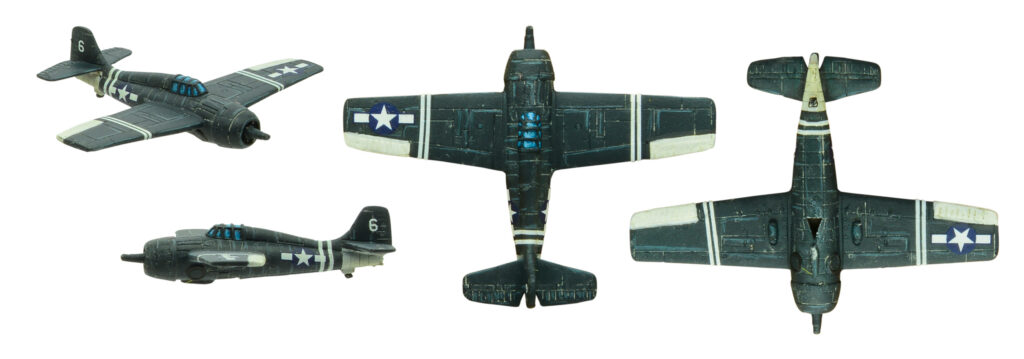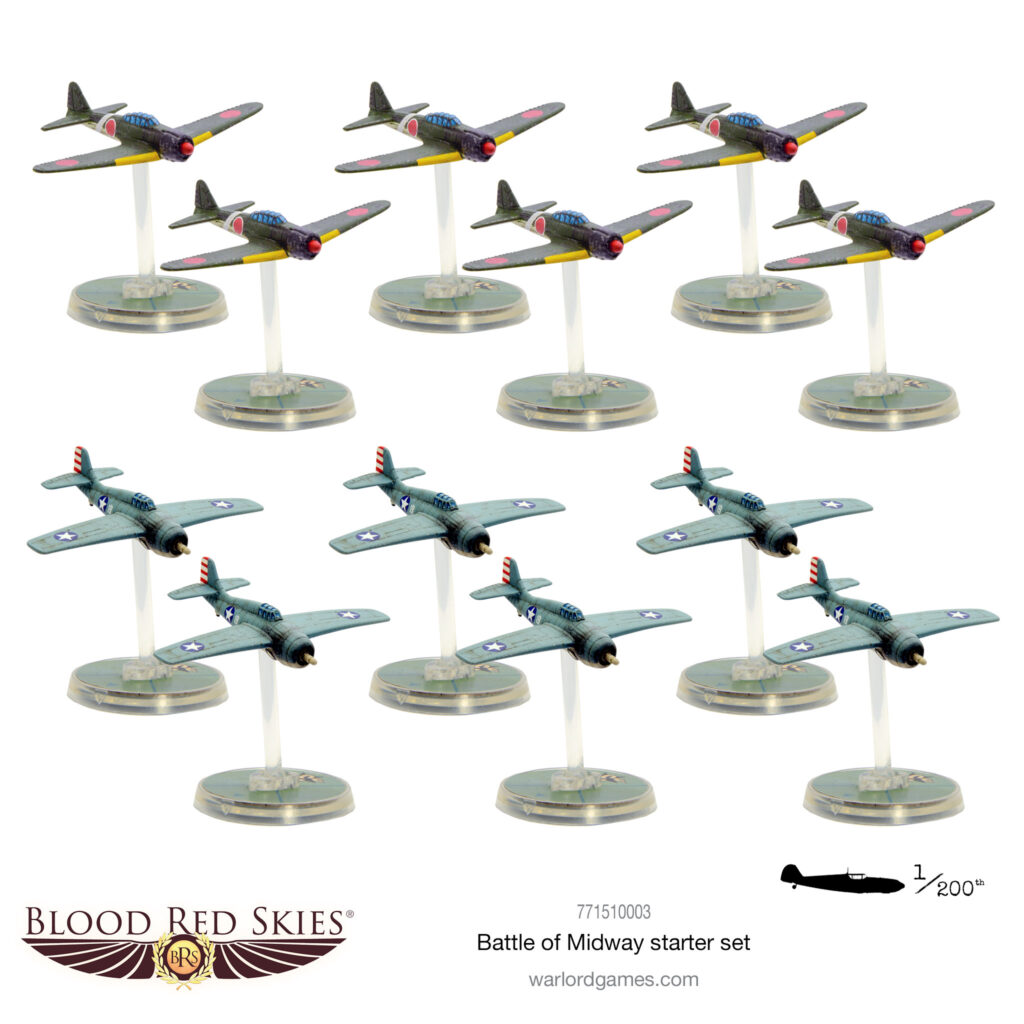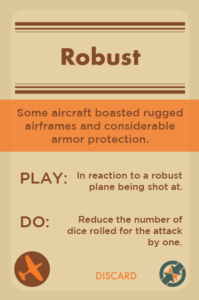Despite a rocky development process that led to aircraft designs being scrapped and redrawn several times, the F4F Wildcat proved to be an incredibly successful naval fighter. In the hands of an experienced pilot, it could pose a threat to superior aircraft like the A6M Zero or Bf 109.
Competition with the Brewster Buffalo forced Grumman to add successively powerful engines to its monoplane design, eventually settling on the configuration that would become the Wildcat in early 1940. Before it was adopted by the US Navy, it was purchased by the French – these would be delivered to the Royal Navy’s Fleet Air Arm instead, where it was christened the Martlet.
In Royal Navy service, the Martlet would be used aboard escort carriers, accompanying supply convoys back and forth across the Atlantic, where it exacted a heavy toll against the Luftwaffe’s long-range maritime patrol aircraft. The Wildcats would see service right through the war, often in conjunction with navalised versions of the Supermarine Spitfire and Hawker Hurricane.
In the Far East, the US Navy and Marine Corps Wildcats tussled with Japanese A6M Zeroes and Ki-43 Oscars – nimble dogfighters in the hands of experienced pilots that were able to exploit the Wildcat’s weaknesses.
The Wildcat was noted for its reliability and rugged construction, well-armoured and equipped with self-sealing fuel tanks which allowed it to absorb an extraordinary amount of punishment before being shot down. This gave it an edge against more fragile Japanese aircraft, allowing it to survive the initial ambush before turning the tables and bringing its battery of .50 calibre machine guns to bear.
Eventually, the Wildcat would be replaced by the F6F Hellcat and F4U Corsair, but it continued to see service for the majority of the war. Modifications were made to add two additional machine guns, giving it a battery of six, along with hardpoints for two 100lb bombs.
Key Stats (F4F-3)
- Crew: 1
- Length: 28 ft 9 in (8.76 m)
- Wingspan: 38 ft 0 in (11.58 m)
- Maximum speed: 331 mph (533 km/h, 288 kn)
- Range: 845 mi (1,360 km, 734 nmi)
- Guns: 4 × 0.50 in (12.7 mm) AN/M2 Browning machine guns with 450 rounds per gun
- Bomb Load: 2 × 100 lb (45.4 kg) bombs and/or 2 × 58 US gal (48 imp gal; 220 l) drop tanks
Flying Wildcats Against Zeroes

When flying historical engagements, your most likely opponent when flying sorties with Wildcats will be the extremely agile A6M2 Zero, which will easily outspeed and outmanoeuvre your comparatively sluggish aircraft if left unchecked. Thankfully, their armament is weaker than yours, offering only a single base die when they instigate an attack. You can further the Japanese’s armament problems by using the Wildcat’s Robust trait. This enables you to reduce the attack pool against a Wildcat by a single die, swinging the dice odds in your favour. When played wisely, the Robust cards will enable your aircraft to survive attacks that would cripple lesser-armoured aircraft.
Should you manage to tail and unleash the full fury of a Wildcat’s guns upon an unfortunate A6M2, not only will you get your two base dice for the attack, but you’ll take advantage of the Zero’s Vulnerable Negative Trait to automatically add an extra dice to your pool. You might want to consider flying a pair of Wildcats in tandem to force the engagements to your favour, as a cunning Zero pilot will not willingly expose their fragile airframe for a kill option should they be liable to incur a US wingman’s vengeance.
Colour Schemes
We once turned to the Design Studio’s resident expert in modelling and painting vehicles, Darek Wyrozebski, to ply his trade in demonstrating the wide range of colour schemes used across various theatres in the aircraft’s guise as the Wildcat in US service, and the Martlet with the British Fleet Air Arm. In each case, Darek has noted the specific paints he used.










Get Yours Today
Blood Red Skies: The Battle of Midway
You’ll find six highly detailed F4F Wildcats in The Battle of Midway starter set, along with six opposing Mitsubishi A6-M2 Zeros and everything else you need to get playing! Full contents:
- 12 x Warlord Resin aircraft (6 x Mitsubishi A6-M2 Zero & 6 x Grumman F4F Wildcat)
- 12 x BRS Advantage Flying Bases
- 2 x BRS Midway punchboards
- 1 x BRS Plastic Token Sprue
- 1 x BRS Battle of Midway Rules Booklet
- 1 x BRS Quick Reference Card
- 6 x Aircraft Cards (Douglas Dauntless, Douglas Devastator, A6-M2 Zero, Aichi D3A ‘Val’, Nakajima B5N Kate & F4F Wildcat)
- 6 x Aircraft Trait Cards
- 17 x Doctrine Cards
- 18 x Theatre Cards
- 12 x BRS Combat Dice
- 1 x USN/IJN Self-adhesive sticker sheet
- 1 x USN/IJN waterslide decal sheet















6 comments
Hi Dan – Good article, however the stats (and the model iirc) are F4F-4s NOT F4F-3s so you may want to fix that
Just call them F4Fs?
Though to be fair you would have to be a real rivet counter to be able to tell the difference at 1:200, so there is no reason why you couldn’t use them as F4F3s, F4F4s or even FM2s
Staring at the pics – its an F4F3 model
Ken Natt, why are you doing this to a writer)))
Great article but Ken is correct they are the -3s,
And while you could play it as any Wildcats from the dash three all the way to the FM-2 the noticeable difference is at the scale, the absence of the wing fold line and the outboard 50 caliber missing
But just build them as VMF 221: the handful of dash threes that fought with the buffaloes.
Still a well done article and one of my favorite games!
Comments are closed.